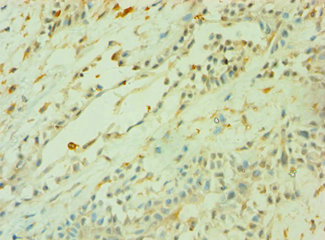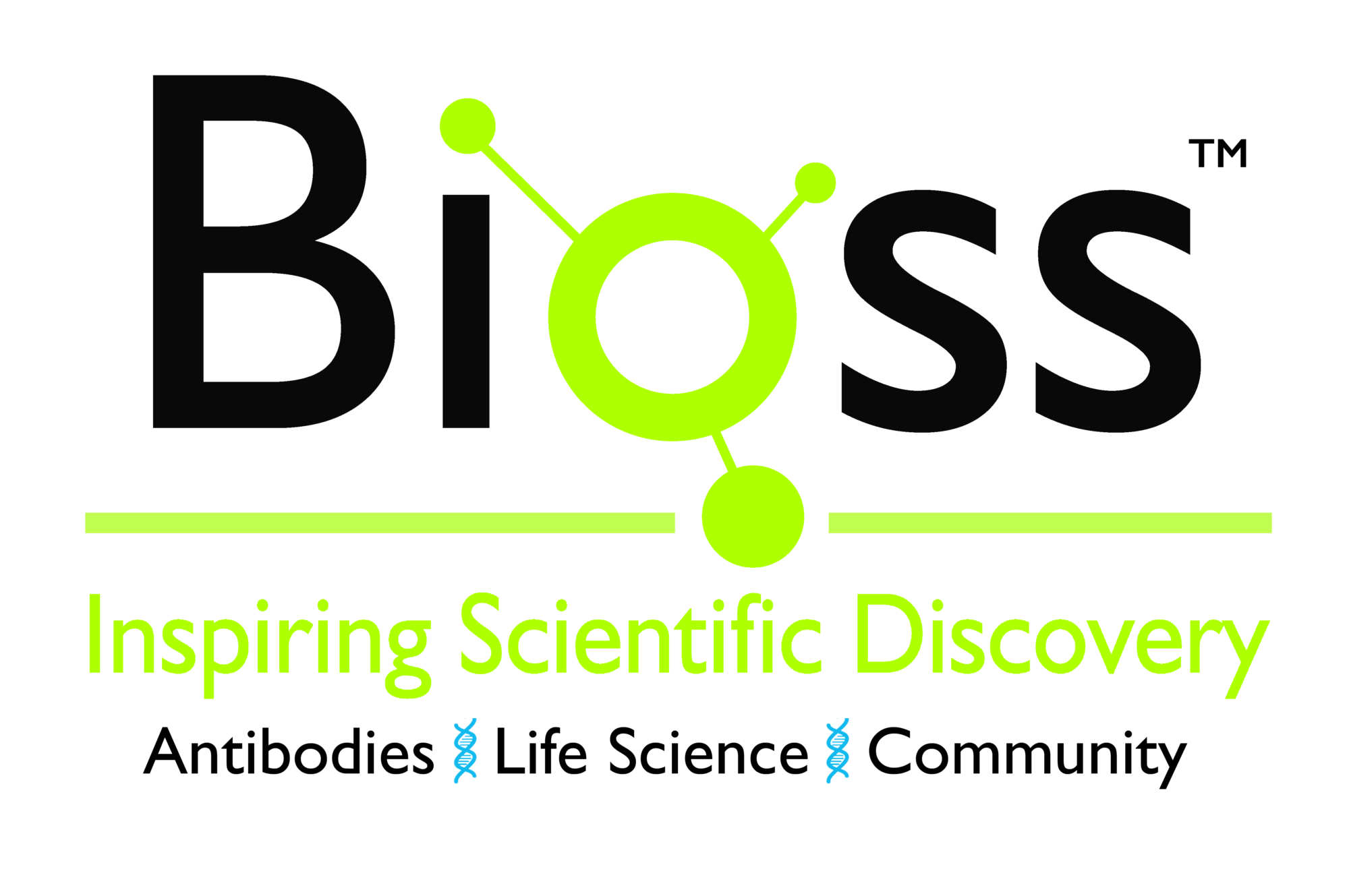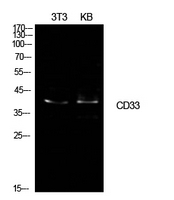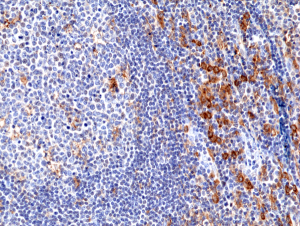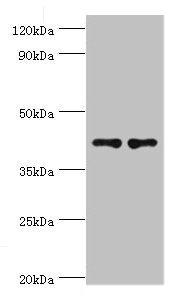
Western blot All lanes: CD33 antibody at 8microg/ml Lane 1: K562 whole cell lysate Lane 2: HepG2 whole cell lysate Secondary Goat polyclonal to rabbit IgG at 1/10000 dilution Predicted band size: 40, 34, 26 kDa Observed band size: 40 kDa
CD33 Antibody
CSB-PA004925ESR1HU
ApplicationsWestern Blot, ELISA, ImmunoHistoChemistry
Product group Antibodies
ReactivityHuman
TargetCD33
Overview
- SupplierCusabio
- Product NameCD33 Antibody
- Delivery Days Customer20
- ApplicationsWestern Blot, ELISA, ImmunoHistoChemistry
- CertificationResearch Use Only
- ClonalityPolyclonal
- ConjugateUnconjugated
- Gene ID945
- Target nameCD33
- Target descriptionCD33 molecule
- Target synonymsCD33rSiglec, SIGLEC-3, SIGLEC3, p67, myeloid cell surface antigen CD33, CD33 antigen (gp67), CD33 molecule transcript, gp67, sialic acid-binding Ig-like lectin 3
- HostRabbit
- IsotypeIgG
- Protein IDP20138
- Protein NameMyeloid cell surface antigen CD33
- Scientific DescriptionPutative adhesion molecule of myelomonocytic-derived cells that mediates sialic-acid dependent binding to cells. Preferentially binds to alpha-2,6-linked sialic acid. The sialic acid recognition site may be masked by cis interactions with sialic acids on the same cell surface. In the immune response, may act as an inhibitory receptor upon ligand induced tyrosine phosphorylation by recruiting cytoplasmic phosphatase(s) via their SH2 domain(s) that block signal transduction through dephosphorylation of signaling molecules. Induces apoptosis in acute myeloid leukemia.
- ReactivityHuman
- Storage Instruction-20°C or -80°C
- UNSPSC41116161

